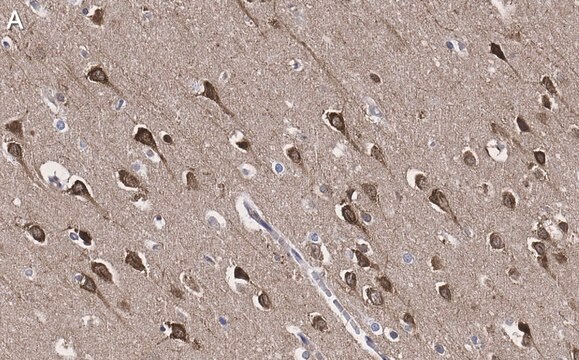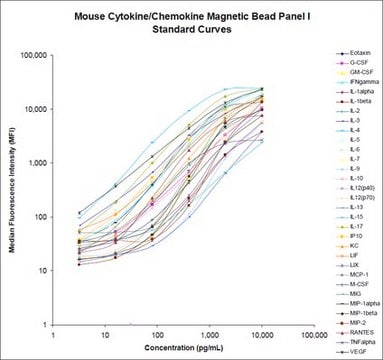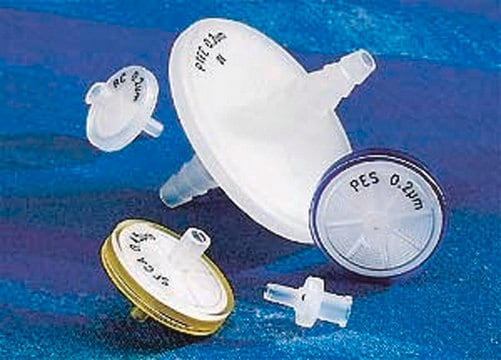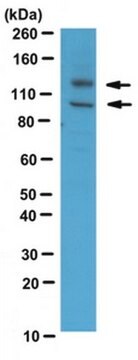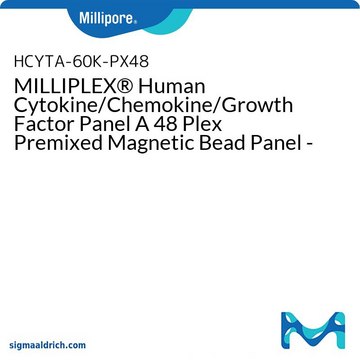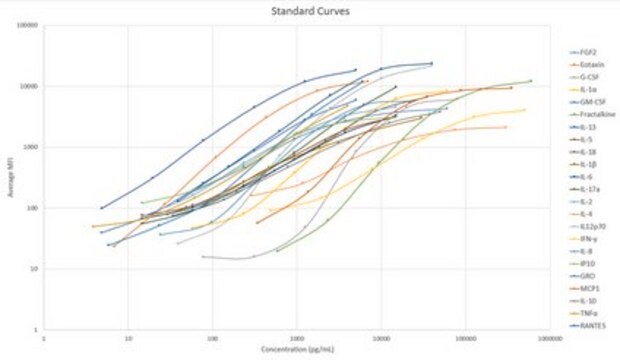AB19026
Anti-ADAM 10 Antibody, CT
Chemicon®, from rabbit
Sinónimos:
A disintegrin and metalloproteinase domain 10, ADAM metallopeptidase domain 10, CD156c antigen, Kuzbanian protein homolog, Mammalian disintegrin-metalloprotease, a disintegrin and metalloprotease domain 10
About This Item
Productos recomendados
origen biológico
rabbit
Nivel de calidad
forma del anticuerpo
purified antibody
tipo de anticuerpo
primary antibodies
clon
polyclonal
reactividad de especies
bovine, mouse, human
reactividad de especies (predicha por homología)
rat
fabricante / nombre comercial
Chemicon®
técnicas
immunofluorescence: suitable
immunohistochemistry: suitable (paraffin)
western blot: suitable
Nº de acceso NCBI
Nº de acceso UniProt
Condiciones de envío
wet ice
modificación del objetivo postraduccional
unmodified
Información sobre el gen
rat ... Adam10(29650)
Descripción general
Tumor-necrosis factor alpha is a proinflammatory cytokine and contributes to a variety of inflammatory disease responses and programmed cell death. Notch receptor and its ligand participate in cell fate decisions during vertebrate development and are associated with several human disorders, including a T-cell lymphoma. TNA-alpha, notch and its ligand delta are all membrane-bond molecules, which are cleaved by proteases to release mature proteins or functional receptor. ADAM10-, a metalloprotease-disintegrin in the family of mammalian ADAM (for a disintegrin and metalloproteinase domain), was recently identified to cleave TNF-alpha, notch and its ligand delta (1-3). The genes encoding human, mouse, and bovine ADAM10 were recently cloned and designated ADAM10, kuzbanian (KUZ), and MADM, respectively, (1,2,4). ADAM10mRNA is expressed in a variety of human and bovine tissues.
Especificidad
Inmunógeno
Aplicación
1:500 - 1:2,000 dilution. Jurkat whole cell lysate can be used as a positive control and an 85 kDa band can be detected which may represent precursor. A 60 kDa faint band was detected in some cell lines including Jurkat, which appears to be the processed mature protein. Overloading of the primary antibody can lead to multiple bands appearing in some preparations. The presence of glycosylated forms and breakdown products can lead to other bands. A prominent proform at near 80-85 is usually seen, with bands at 60, and below 50 kDa in most cases. The immunogen peptide is available (Cat. No. AG533) for performing antibody blocking studies.
Optimal working dilutions must be determined by end user.
Immunohistochemistry:
A previous lot of this antibody was used to detect ADAM10 in formalin-fixed, paraffin-embedded renal tissue and renal cell carcinoma tissue (Gutwein, P., et al. EUROPEAN JOURNAL OF CANCER. 45(2009):478–489).
Immunofluorescence:
A previous lot of this antibody was used to detect ADAM10 in RCC4 (renal cell carcinoma) and A498 cells (Gutwein, P., et al. EUROPEAN JOURNAL OF CANCER. 45(2009):478–489).
Calidad
Western Blot: 1:500 dilution of this lot detected ADAM 10 on 10 μg of RAW264.7 lysates
Descripción de destino
Ligadura / enlace
Forma física
Almacenamiento y estabilidad
Handling Recommendations:
Upon receipt, and prior to removing the cap, centrifuge the vial and gently mix the solution. Aliquot into microcentrifuge tubes and store at -20°C. Avoid repeated freeze/thaw cycles, which may damage IgG and affect product performance.
Nota de análisis
ADAM 10 is ubiquitously expressed. MDA-MB231 (Human breast cancer cell line known to express high levels of ADAM 10).
Otras notas
Información legal
¿No encuentra el producto adecuado?
Pruebe nuestro Herramienta de selección de productos.
Opcional
Código de clase de almacenamiento
12 - Non Combustible Liquids
Clase de riesgo para el agua (WGK)
WGK 2
Punto de inflamabilidad (°F)
Not applicable
Punto de inflamabilidad (°C)
Not applicable
Certificados de análisis (COA)
Busque Certificados de análisis (COA) introduciendo el número de lote del producto. Los números de lote se encuentran en la etiqueta del producto después de las palabras «Lot» o «Batch»
¿Ya tiene este producto?
Encuentre la documentación para los productos que ha comprado recientemente en la Biblioteca de documentos.
Nuestro equipo de científicos tiene experiencia en todas las áreas de investigación: Ciencias de la vida, Ciencia de los materiales, Síntesis química, Cromatografía, Analítica y muchas otras.
Póngase en contacto con el Servicio técnico